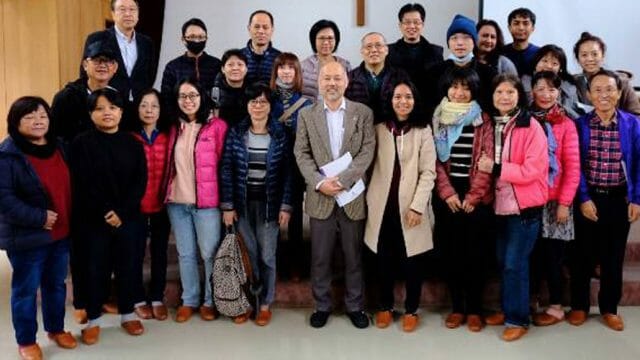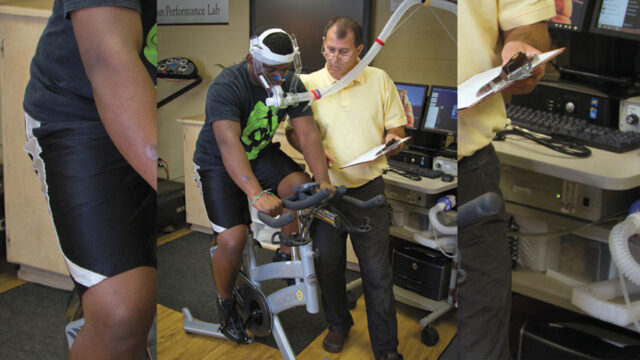Historical items of Adventist history will be preserved to be shared and exhibited.
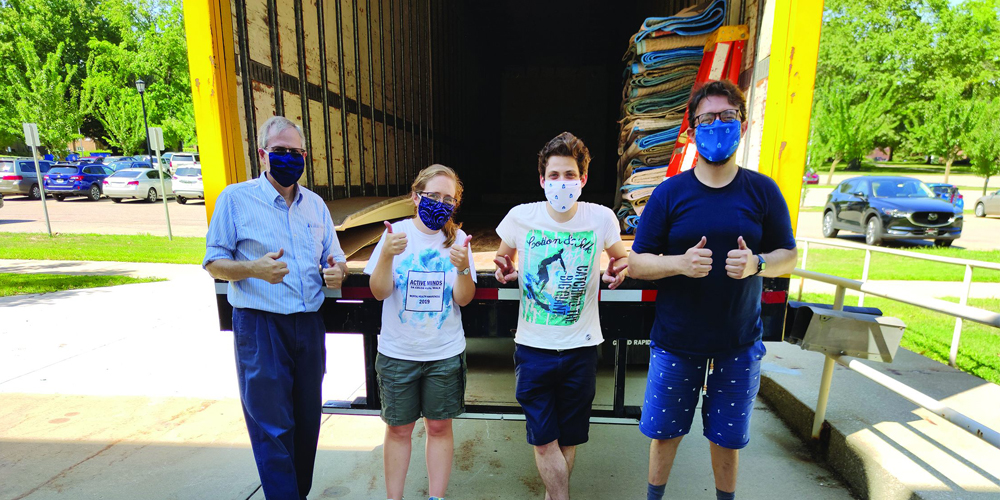
Unloading a tractor-trailer full of boxes on a hot and steamy August day in Berrien Springs, Michigan, United States, is not ideal. Still, there was anticipation in the air as several staff members and student workers from the Center for Adventist Research (CAR) and James White Library unloaded the vast yellow Andrews University trailer filled with roughly 30,000 pounds (13,600 kg) of materials.
The shipment included books, artifacts, tracts, periodicals, and other resources from the Atlantic Union College (AUC) Heritage Room and other locations on the campus of the now-closed college that were once a part of its historical materials collection.
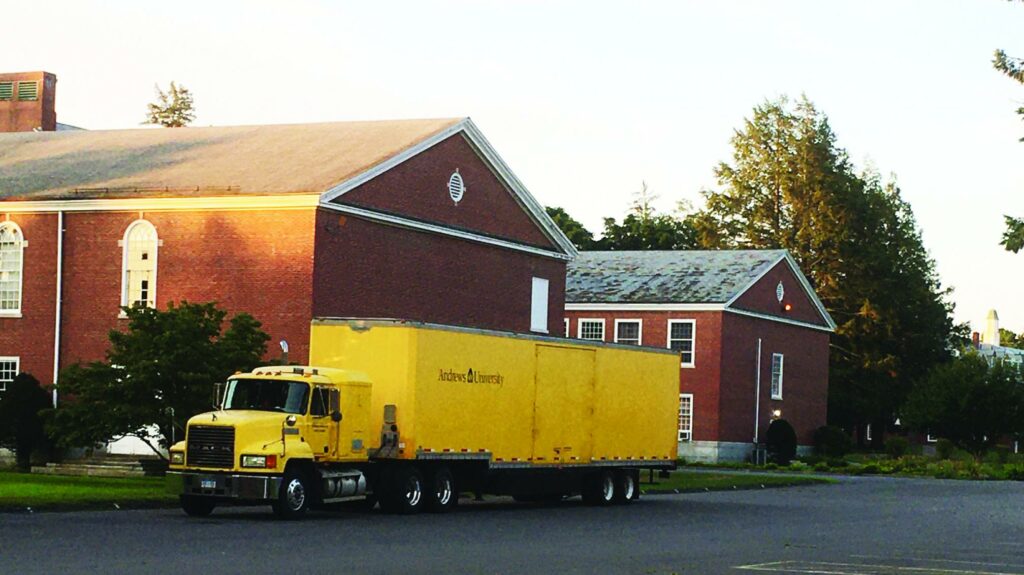
Also included were selected administrative and organizational records, documenting the most recent 20 years of the college. AUC, opened in 1882, was the oldest Seventh-day Adventist educational institution operating on the same site where it was founded.
Judymae Richards, administrative assistant at CAR, said, “I was excited to be able to help. It turned out to be a wonderful time of teamwork and fellowship—one of the first times we were able to work together in person in months. We ladies carried items and stacked boxes all day. It was truly a team effort. We are very grateful that the AUC items are finding a home here at Andrews University. They represent a great faith heritage.”
A Push to Preserve History
The historical materials made the 18-hour trip from the AUC campus in South Lancaster, Massachusetts, to Andrews University over two days, stopping at the Historic Adventist Village in Battle Creek, Michigan, to drop off items from AUC going to Adventist Heritage Ministries. Securing the AUC materials was an extended process that encompassed several years.
Since 2011, when AUC was forced to close its doors for a variety of reasons, leaders of the college and the Atlantic Union Conference made several efforts to find a way to reopen and keep it functioning. After that was no longer possible, the leaders of the union were looking into the possibility of establishing a museum that would feature Adventist artifacts and other historical resources held by the college. Seventh-day Adventism began in New England, and it seemed appropriate to continue to maintain the historical resources in that part of the country.
However, it soon became clear that the cost and logistics to accomplish that plan would be too high. Merlin Burt, then director of CAR, together with James Nix, the now-retired director of the Ellen G. White Estate, and its vice-director, Tim Poirier, along with Markus Kutzschbach, executive director of Adventist Heritage Ministries, led out in the collaborative effort. The team assisted the Atlantic Union Conference officers, and through them the union executive committee, in assessing how best to proceed with preserving the valuable Adventist historical artifacts, books, and other materials.
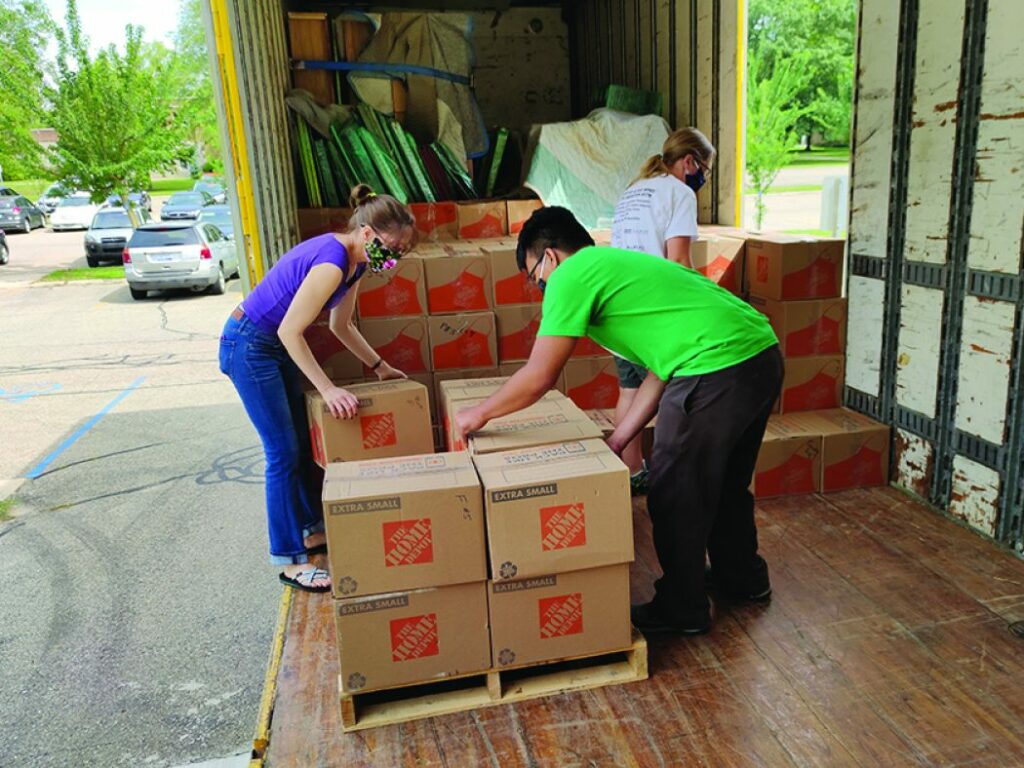
The decision was made to first find places within the Atlantic Union Conference for some of the artifacts and materials. Next, many of the more significant artifacts went to the Ellen G. White Estate in Silver Spring, Maryland, and to the sites of Adventist Heritage Ministries. The bulk of the historical and research materials came to CAR at Andrews University. Much of physical preparation of the heritage materials and their transport to their new locations was done by Jim Ford, associate director of CAR.
“The entire Seventh-day Adventist Church owes a debt of gratitude to the many faithful believers who preserved and cherished these artifacts and records,” says Merlin Burt. “It’s very difficult for modern Adventists to grasp the real lives of those who founded this movement more than 150 years ago, and the collection housed for so many years at AUC helps us do that. Looking at James White’s writing desk or studying the ingenious contraption that Stephen Haskell invented to pull great iron stakes when evangelistic tents had to be moved—these bring the world of our pioneers much closer.”
White Estate vice-director, Tim Poirier, grew up New England, attending Greater Boston Academy and Atlantic Union College, from which he graduated in 1980. Throughout his college career, Poirier attended religion classes in Founders’ Hall, the first structure built by the fledgling campus in 1884. He also worked in the school’s library, spending many hours in its treasured Heritage Room.
“Attending AUC shortly after this famous building was renovated and began serving as a center for heritage materials was a bit like going to school in a living museum,” Poirier says. “The full-length 1850s portraits of William and Lucy Miller hung in the chapel where theology students practiced their sermons. The physical objects and documents of a long-gone era were all within reach. Preserving that heritage will help the Adventist past come to life for thousands more in the future.”
Leaders said that the Atlantic Union Conference officers, executive committee, and constituency deserve a great recognition and gratitude for their careful attention to preserving these priceless and important materials for posterity. These materials will permit telling stories, they said, about the mighty acts of God and the working of the Holy Spirit in the lives of early Seventh-day Adventists and the educational ministry of the Seventh-day Adventist Church.
The plan further allows the opportunity to show objects associated with those stories. As the saying goes, “A picture [or an object, in this case] is worth a thousand words.” Particular appreciation is due to Elias Zabala, treasurer of the Atlantic Union, and Barbara Fuller, the AUC campus manager, leaders said, as they showed great responsibility in preserving the materials during the uncertain years since the school’s closing. It should be noted that the historical materials entrusted to CAR and other entities are to continue the memory, legacy, and story of AUC. Thousands of students attended AUC over the years, and many of the students went on to make significant contributions to the mission of the Seventh-day Adventist Church and to the world.
Unique Treasures to Be Displayed
CAR will preserve multiple diverse objects for Adventist research, such as, for example, original communion glasses from the church at Washington, New Hampshire, where the seventh-day Sabbath was first embraced in the spring of 1844, and materials from Adventist pioneers James White, Stephen N. Haskell, Uriah Smith and F. C. Gilbert. Other materials include the Ottilie Stafford poetry/literature collection; records from the former New England Sanitarium; paintings; class banners; chairs from the AUC Board Room; and administrative records documenting the college’s last years. Also, the periodical collection from the Heritage Room of the AUC library is a particularly rich trove of materials. It is expected to expand the resources available through both CAR and the Adventist Digital Library.
“Moving the AUC collection to Andrews University was bittersweet for me,” Tamara Karr, collections associate at CAR, said. “I grew up in New England, and most of my family attended Atlantic Union College. AUC’s closing was very sad, and moving items that represented its history made the closing final. However, knowing that the collection is here at Andrews made me happy. I know it will be preserved and shared.”
When the AUC resources are added to CAR’s collection, they will be identified in the James White Library catalog as coming from AUC. Exhibited items will also be shown as coming from AUC. Additionally, when material that came from AUC is digitized and placed in the Adventist Digital Library, AUC will be identified as the source of the material. In that way, these items and materials will continue the legacy of the college. After the inventory work is complete, CAR will share unneeded materials with other Adventist institutions to further preserve the legacy of AUC.
The original version of this article, which appeared in FOCUS magazine, was also posted by the Lake Union Herald.





